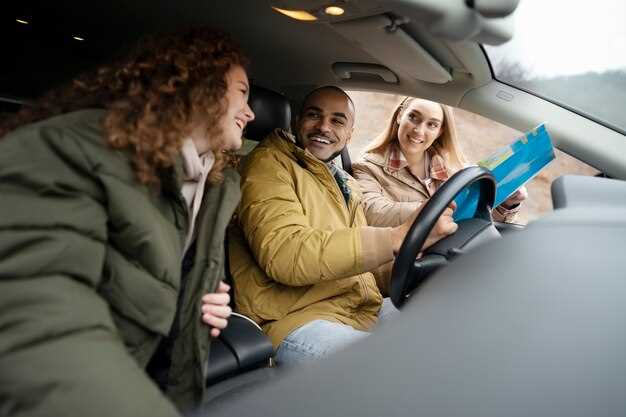

Embarking on a long-distance motorcycle trip with a group can be one of the most exhilarating experiences for any rider. However, it also comes with its own set of challenges that require careful consideration and planning. Understanding the dynamics of riding as a group is crucial to ensure the safety and enjoyment of all participants. This article will explore essential tips for safe group riding, helping you navigate the open road with confidence and camaraderie.
Effective communication is a cornerstone of safe group riding. Riders should establish clear hand signals and use intercom systems, if available, to keep everyone informed about upcoming turns, speed changes, and potential hazards. By doing so, each member of the group can remain aware of the overall pace and intentions, minimizing the likelihood of unexpected situations. Always ride at a pace that is comfortable for everyone, regardless of individual skill levels.
Another vital aspect is maintaining a safe distance between motorcycles. This spacing allows for adequate reaction time in case of sudden stops or obstacles on the road. Riders should adopt a staggered formation whenever possible, as it enhances visibility and stability while reducing the risk of collisions. Furthermore, regular stops for breaks not only boost safety but also strengthen the bonds within the group, providing opportunities for rest and camaraderie.
Planning Your Route and Break Stops
When embarking on a long-distance group ride, meticulous planning of your route and scheduled breaks is essential for ensuring safety and enjoyment. Start by selecting a route that is appropriate for the skill level of all riders in the group. Use reliable mapping tools to identify roads that are both scenic and well-maintained, avoiding areas with heavy traffic or challenging terrains whenever possible.
Consider incorporating a mix of highways and back roads to enhance the experience and allow for easier navigation. Always account for the distance between your starting point and your destination, and break it down into manageable segments, ideally not exceeding 200-250 miles per day. This will prevent fatigue and keep everyone in the group comfortable and focused.
For break stops, prioritize locations that provide a safe place for riders to rest, refuel, and refresh. Look for gas stations with convenience stores, cafes, or scenic parks that offer facilities for stretching and regrouping. Aim for breaks every 1.5 to 2 hours to maintain energy levels and optimize focus on the road.
Lastly, ensure everyone is aware of the planned route and break stops. Distribute maps or notes via a group chat or printed materials so that every member knows the itinerary and can easily communicate during the ride. This preparation fosters a sense of camaraderie and helps prevent anyone from getting lost along the way.
Establishing Communication and Signaling Techniques

Effective communication and signaling are crucial in ensuring safety and coordination during long-distance group rides. Establishing clear methods can prevent misunderstandings and enhance the riding experience for all participants.
To facilitate smooth communication, consider the following techniques:
- Hand Signals: Utilize universally recognized hand signals to convey messages. Common signals include:
- Left Turn: Extend your left arm straight out.
- Right Turn: Bend your left arm at a 90-degree angle upwards.
- Stop: Extend your left arm downward at a 90-degree angle.
- Pothole or Obstacle: Point downwards with your left hand.
- Slowing Down: Wave your left arm up and down.
- Verbal Communication: Maintain constant verbal communication, especially in larger groups. Key points include:
- Use a loud and clear voice to announce hazards or changes in speed.
- Establish a designated “leader” who will call out commands.
- Encourage team members to respond so messages are acknowledged.
- Group Positions: Maintain specific riding positions to assist in communication efforts:
- Designate a front rider to lead and set the pace.
- Keep staggered formations for better visibility and signaling.
- Assign a rear rider to monitor the group’s safety and provide signals to those behind.
- Use of Technology: Incorporate technology to enhance communication if needed:
- Walkie-talkies or headsets can facilitate direct communication.
- Utilize GPS apps that allow for group tracking and messaging.
Regular practice of these techniques before embarking on a long-distance trip can greatly improve the group’s cohesion and safety. Make sure everyone understands the chosen methods, and encourage feedback for continuous improvement.
Maintaining Group Coordination and Safety Awareness

Maintaining effective communication within a riding group is essential for ensuring safety and coordination. Prior to setting out on a long-distance trip, establish clear communication methods, such as hand signals or agreed-upon verbal cues. This allows all riders to respond appropriately to changing road conditions or potential hazards.
Regular Check-ins: Schedule regular intervals for check-ins during the ride. This can include brief pauses to regroup and confirm that all riders are present and in good condition. These stops also provide an opportunity to share any concerns and adjust plans if needed.
Designate Roles: Assign specific roles to members of the group, such as a leader, a sweeper, and navigators. The leader sets the pace and route, while the sweeper ensures no one is left behind. Navigators can provide directions or help with route adjustments as necessary.
Maintain Safe Distances: Encourage riders to maintain safe distances between each other. This prevents collisions and provides adequate reaction time for unforeseen circumstances. A gap of about three to five seconds between riders is advisable, especially in varying weather conditions.
Awareness of Surroundings: All riders should prioritize awareness of their surroundings. This includes monitoring traffic, road conditions, and the behavior of other group members. If someone is struggling with fatigue or has equipment issues, it is crucial for others to notice and respond accordingly.
Emergency Procedures: Develop and communicate emergency procedures before the trip. This should include actions to take if a rider gets separated from the group or if an accident occurs. Ensure everyone knows who to contact and what protocols to follow in case of an emergency.
By implementing these strategies, your group can enjoy a safer and more cohesive riding experience on long-distance trips. Consistent communication, designated roles, and a focus on situational awareness are key to maintaining coordination and fostering a safe riding environment.






